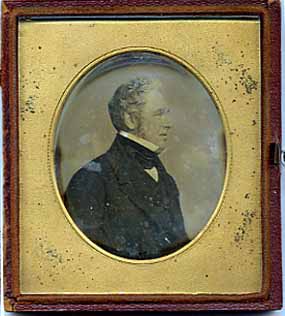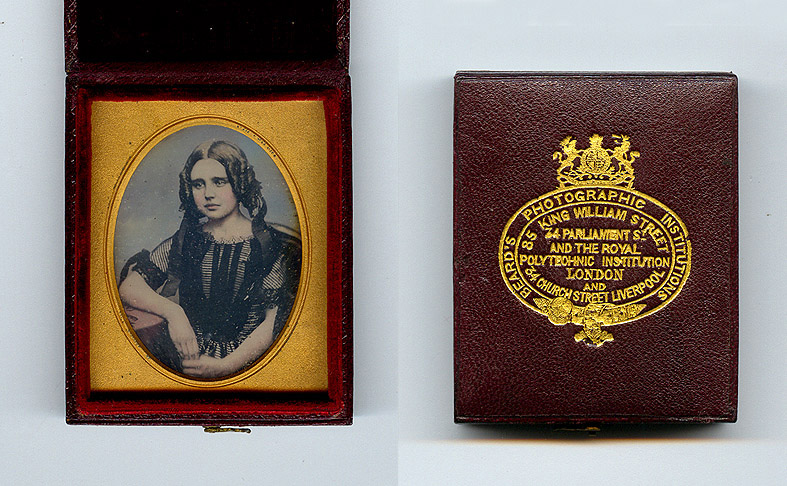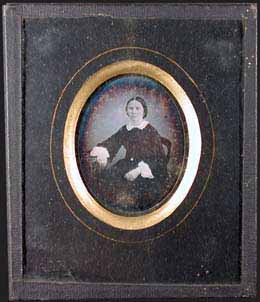The daguerreotype process was the first practicable method of obtaining permanent images with a camera. The man who gave his name to the process and perfected the method of producing direct positive images on a silver-coated copper plate was Louis Jacques Mande Daguerre, a French artist and scenic painter. Daguerre had began experimenting with ways of fixing the images formed by the camera obscura around 1824, but in 1829 he entered into partnership with Joseph Nicephore Niepce (1765-1833), a French amateur scientist and inventor who, in 1826, had succeeded in securing a picture of the view from his window by using a a camera obscura and a pewter plate coated with bitumen. Niepce called his picture-making process heliography ("sun drawing"), but although he had managed to produce a permanent image using a camera, the exposure time was around 8 hours. Niepce later abandoned pewter plates in favour of silver-plated sheets of copper and discovered that the vapour from iodine reacted with the silver coating to produce silver iodide, a light sensitive compound.
After the death of Niepce in 1833, Daguerre continued to experiment with copper plates coated with silver iodide to produce direct positive pictures. Daguerre discovered that the latent image on an exposed plate could be brought out or "developed" with the fumes from warmed mercury. The use of mercury vapour meant that photographic images could be produced in twenty to thirty minutes rather than hours. In 1837, Daguerre found a way of "fixing" the photographic images with a solution of common salt. Two years later, he followed the suggestion of Sir John Herschel (1792-1871) and adopted hyposulphate of soda (now thiosulphate of soda ) as the fixing agent.
Daguerre began making successful pictures using his improved process from 1837. On 19th August,1839, at a meeting in Paris, the Daguerreotype Process was revealed to the world.
In England, Richard Beard (1801-1885), a former coal merchant and patent speculator, bought the patent to Alexander Wolcott's mirror camera and employed the services of John Frederick Goddard (1795-1866), a chemist, to find a way of reducing exposure times to less than a few minutes, thereby making it possible to take daguerreotype portraits. On 23rd March 1841, Richard Beard opened Englandís first daguerreotype portrait studio in London's Regent Street. In June 1841, Beard purchased from Daguerre the patent rights to the daguerreotype process in England.


[ ABOVE ] A daguerreotype portrait of Louis Jacques Daguerre by John Jabez Edwin Mayall , a photographic artist who established a studio in London in 1847 and later set up a photographic studio in Brighton, Sussex. This daguerreotype dates from 1846.
[ LEFT] Apparatus and equipment for making daguerreotypes, from an advertisement published in 1843.


 Sensitizing the Plate
Sensitizing the Plate








